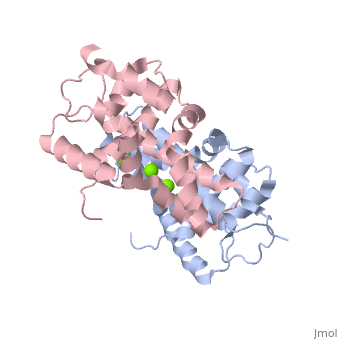This is a default text for your page Sandbox Dicer Corey. Click above on edit this page to modify. Be careful with the < and > signs.
You may include any references to papers as in: the use of JSmol in Proteopedia [1] or to the article describing Jmol [2] to the rescue.
History
Dicer, or endoribonuclease Dicer, was discovered/named in 2001 by Emily Bernstein. She was a graduate student in Greg Hannon's lab at the Cold Spring Harbor Laboratory in New York. She was trying to discover the enzyme that was responsible for removing small RNA fragments from double-stranded RNA. The dicer enzyme was found by isolating it from the RISC complex in the RNAi mechanism. It was known that RISC was not responsible for chopping up these small RNA fragments, so this complex was isolated from the system to locate the enzyme that was the source for these RNA fragments.
Dicer is a member of the RNase III family, is known as drosophilia CG4792 and it is found in multiple organisms, with two of the most common forms that are used in biochemistry being Mice and Human Dicer. The discovery of Dicer was important for understanding the regulation of gene expression and the epigenetic silencing of genes by miRNA.
The human endoribonuclease Dicer is 219 kDa, which is larger than many other organisms' Dicer enzymes. This is due to Humans having different domains present, and in many cases, more domains.
Structure
Human Dicer is made up of both a Helicase and a PAZ domain, in addition to containing two RNase III domains and two double-stranding RNA domains. The
Diseases
Relevance
This is a sample scene created with SAT to by Group, and another to make of the protein. You can make your own scenes on SAT starting from scratch or loading and editing one of these sample scenes.

